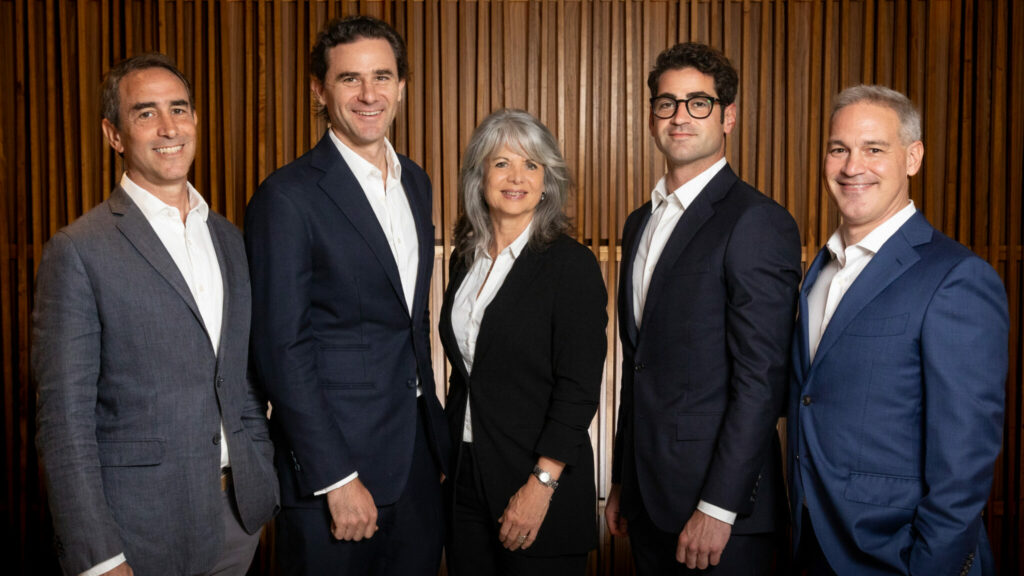Entrepreneur Profiles, Gender Diversity
Entrepreneur Profile: Angela Cois, LastRoom
24 November 2014

Angela Cois, Founder and COO of Lastroom, a Mexico-based travel manager specifically tailored for SMBs, was the winner of last year’s WeXchange pitch competition, a Latin American forum focused on connecting and empowering female entrepreneurs with high-growth businesses. 2014 WeXchange is coming up Dec. 11-12 in Miami.
LAVCA: Please summarize your business.
Cois: LastRoom is a travel manager specifically tailored for SMBs. We help companies and business travelers organize their business trips with an affordable technology, providing them with hotels worldwide and a set of expense control tools like real time data and invoices. We’re based in Mexico City and we have two years’ experience in the travel industry, pivoting from a B2C solution of same-day hotel booking to a B2B travel management service completely free for companies of any size. Our initial idea, in December 2012, was trying to replicate the model of Hotel Tonight in Latin America, however, after one year of hard work we realized that this model doesn’t really work.
LAVCA: Why was Mexico a good market to start LastRoom?
Cois: I believe Mexico is a very difficult market to start a tech company. Mexicans are not “early adopters”, meaning it is challenging to test your product while simultaneously being able to build a loyal customer base. If your prototype is full of bugs or doesn’t’ work properly they simply delete it from their iPhone and send over a horrible review which would kill the spirit of even the most enthusiastic entrepreneur. Another big flaw of the Mexican market is the limited access to credit cards. This is an enormous barrier for online enterprises. On the other hand, I must say that as a team we haven’t moved from Mexico because it’s an amazing city to start a brand new company: very close to the U.S. and just 4 hours away from another interesting market like Colombia; full of co-working spaces and networking events; it has an international airport with daily connections to almost any big city around the world. And while there is a stigma regarding Mexican universities (a lot of Mexican entrepreneurs believe that it’s mandatory to hire developers from Silicon Valley because there is not enough talent here), we think they’re completely wrong. It’s crazy to start your business from scratch in a place where you can’t pay a mobile developer less than $10k USD per month, or where a good place to work could cost around $3,000 USD. We think that the best formula for a LatAm business is “Local Talent + Global Vision.” Your technical team should be based in a place where the cost of living is significantly lower in order to save money while you’re building a product.
LAVCA: Who are your competitors and how has this created challenges and opportunities for growing the business?
Cois: The scenario of travel managementis dominated by the global distribution systems solutions, such as GetThere (from Sabre), E-Travel Management (from Amadeus) or Concur (recently acquired by SAP), they’re all sophisticated software tailored for big and structured organizations, willing to spend thousands of dollars of transactional fees, in order to control the expenses and guarantee corporate travel policies.
Considering the SMBs segment, solutions like Expensify or TripIt are great ways to simplify some specific tasks like expenses’ reporting, or itinerary planning, but force the travelers to use other platforms to buy a flight or book a hotel.
Finally, we have the business travel programs offered by OTAs, like Egencia, or Orbitz for Business, which provide limited content in hotels and lack the most basic corporate control tools such as invoices’ recollection or real-time data.
LastRoom sees an opportunity to change this fragmented scenario, being the first OTA 100% focused on business travelers. This means that on one hand we can provide the best content in hotels worldwide from different providers (LastRoom’s API integrates with multiple hotel providers, both B2B and B2C), on the other hand, we can improve the process of expense controls within small and medium enterprises, where everything is done manually: invoices recollection, expenses’ reporting and data analysis.
LAVCA: LastRoom won the WeXchange competition in December 2013. How did this help advance the business?
Cois: Taking part of the WeXchange pitch competition was one of the smartest decisions I took in my life. It was a valuable learning experience and I 100% recommend it for the great networking and feedback I received. Frankly, I traveled to Miami with the main purpose of validating the pivot I had in mind for my business, shifting the focus of LastRoom from leisure to business travelers. The media exposure of the next few months was very important for our startup (we were covered by many tech blogs and I was interviewed by many women entrepreneur communities.) WeXchange organizer FOMIN also gave me a check of $5,000 USD to attend the TechCrunch Disrupt San Francisco last September, taking part of the Startup Alley and presenting our software to thousands of people and investors.
LAVCA: What financing have you received thus far? From whom and at what point? What resources have you used in your search for financing? Are you currently looking for additional financing?
Cois: LastRoom was part of the third generation of NxtpLabs accelerator program. They invested $25k USD in September 2012 in the initial version, the mobile app for same-day hotel booking. From then on we’ve been working on bootstrapping and Josue Gio, Co-Founder and CEO at LastRoom, has invested $250k USD. Right now, two months from our public launch and with a global product ready, we’re looking for $1.5M USD in funding from travel investors or funds which could be strategic partners in the US and Latin America.
LAVCA: How have you/do you plan to use the financing? In general, how do you plan to grow the business? Do you have plans to expand internationally?
Cois: If funds were raised today our top priorities to grow our business will be:
- Building a strong sales team
- Integration of the air module as a part of a dream of building a complete travel suite for business travelers
- Improving the expenses’ management and reporting experience
- Investing in customer support and delivering a memorable service to our customers
LAVCA: In your experience, what are the biggest opportunities and challenges for creating and growing a business in Latin America?
Cois: Let’s start with the challenges:
Difficult access to seed investment (after being incubated or accelerated): In my experience, this is a huge problem in LatAm. It typically takes place during that specific phase of the startup’s life, where your product is good, it works, you have your first 500 clients but you need 500k-1M USD to keep on working and to bring your company to the next level.
Young market: It’s difficult to validate an idea and build an initial mass of early adopters in a place where the use of credit cards is limited.
Considering the opportunities:
In countries like Mexico, there are plenty of real problems affecting various market segments that have not been solved with technology yet. This is a huge opportunity for creative engineers and entrepreneurs.
The ecosystem of startups, tech communities, investors and VCs is growing day by day in Mexico. Two years ago there were less opportunities to receive feedback, to pitch in front of investors, to raise $30k USD to build a prototype, or speak with more experienced entrepreneurs who have already lived through raising money or making an exit. It’s amazing the importance of having role models which could inspire other entrepreneurs and increase the trustof the VCs towards Latin American startups.
You may be interested in...
-

Is AI a Thing in Latin America? In Conversation with Hi Ventures
LAVCA sits down with Hi Venture to discuss their evolving thesis and vision for...
-

Top & Emerging Women Investors in Latin American Tech 2023
View LAVCA’s list of Top Women Investing In Latin American Tech. Women in venture...
-

The Future of B2B Startup Investing in LatAm: In Conversation with NXTP
NXTP Ventures recently reached a USD98m final close for NXTP Fund III, its third...
-

A 20-Year Journey: An Interview with Technisys CEO Miguel Santos
Company: Technisys Investors: KASZEK, Dalus Capital, Riverwood Capital Interview...